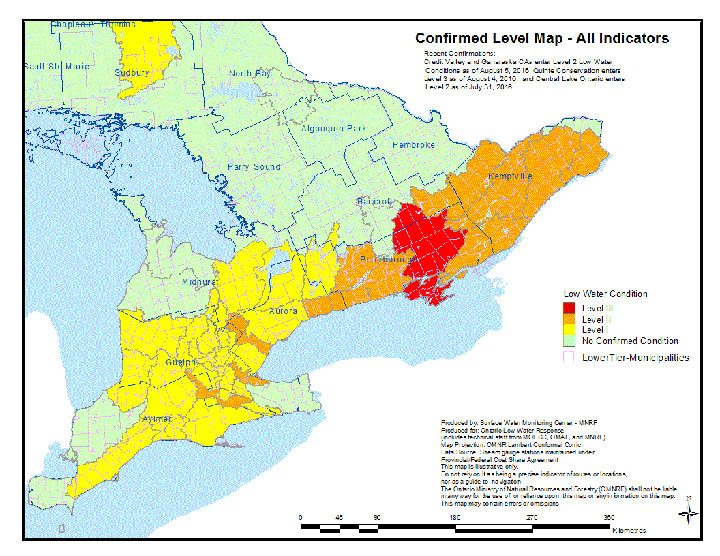For farmers across the country, it’s a tale of two growing seasons: Farmers in the west have faced much wetter conditions this season, while in eastern Canada — in particular southern and eastern Ontario — farmers are facing drought-like conditions.

Rain, and plenty of it, has fallen across most of the southern Prairies. To make things worse, severe storms have pummelled some farms with hail, damaging crops.
READ MORE: Dry Maritime weather prompts burn bans, creates challenge for farmers
In Saskatchewan the rain has increased the risk of rot and disease.
“Our rain started at the end of June, and pretty much hasn’t stopped since then,” said Daphne Cruise, a Saskatchewan crop specialist.
“Pretty much all of July it’s been off and on, anywhere from minimal damage to 100 per cent losses in some cases,” she said.

In Calgary, the precipitation has been particularly bad with the city receiving triple the average rainfall for July. But for grain farmers, that’s not entirely a bad thing.
READ MORE: Extreme Alberta weather coming at a huge cost to farmers
“I’d say we have a much better than average crop potential,” said Alberta crop specialist Harry Brook.
Meanwhile, southwestern, eastern Ontario and parts of the Maritimes are facing drier than normal conditions. A swath extending through the middle of Nova Scotia heading northwards into Prince Edward Island is seeing particularly damaging conditions.

In eastern Ontario, farmers are facing a “point of no return,” said Don McCabe, president of the Ontario Farmers’ Association.
This image illustrates the difference from normal in precipitation across Ontario during the growing season.
“Prince Edward County and the Quinte-Belleville area are in a level III low water situation…the most severe,” said Geoff Coulson, a weather preparedness meteorologist with Environment Canada. And what’s worst still, “No widespread, big rainfalls showing up in the near-term forecast at this point in time.”
In Ontario, the rain has been sporadic. When precipitation does come, it tends to be in the form of a thunderstorm with heavy rain. This means that the rainwater runs off, with the ground unable to absorb it, leaving crops parched.
Just as in Saskatchewan, not every farmer is feeling the effects in Ontario: McCabe said that wheat farmers will likely see a record year. But those growing corn and soybeans will suffer large losses.
WATCH BELOW: Thunderstorms costly for southern Alberta farmers

“Some farmers will have insurance to cover, but nobody wants to live off insurance,” he said.
The stress farmers from across the country are experiencing is dismaying: in an industry already seeing a decline, loss of crops and revenue could force those farmers already considering abandoning their profession to bail.
According to Statistics Canada,there were 246,923 farms across the country in 2001 . As of 2006 (the latest available statistic), that number had dropped to 229,373.
Farmers are always at the whim of weather, but it’s not just them who will face the consequences: consumers will likely be doling out more money at the register for their fruits and vegetables as farmers harvest smaller yields.
“There’s only one rule in farming and that’s that Mother Nature always wins,” said McCabe.
—with files from The Associated Press



Comments